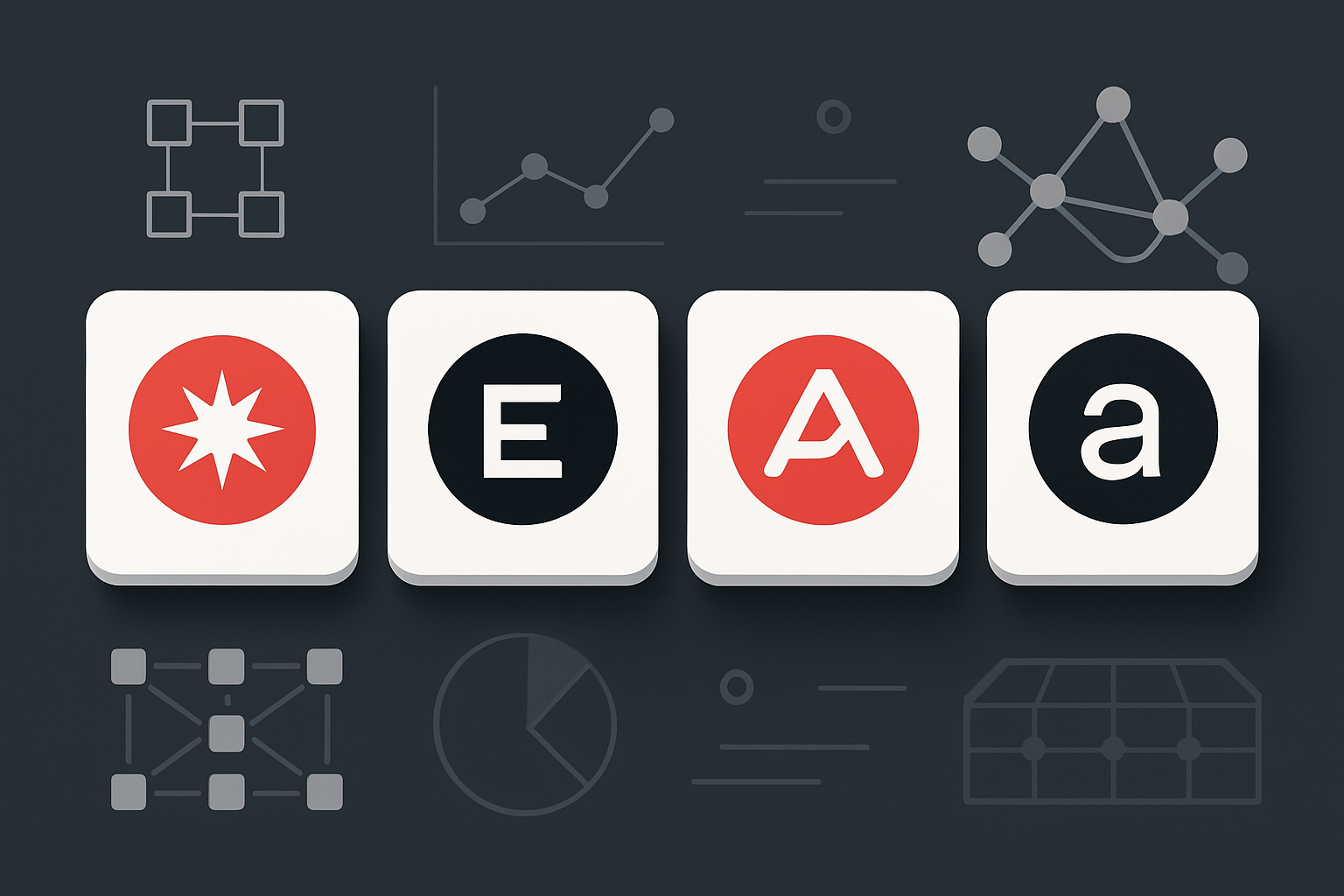
Choosing the right modular data availability (DA) layer is a foundational decision for any blockchain project aiming to maximize scalability, security, and cost-efficiency. EigenDA and Celestia have emerged as frontrunners in this rapidly evolving landscape, each with distinctive architectures and integration strategies. As demand for high-throughput rollups and flexible execution environments accelerates, understanding the trade-offs between these two DA solutions is critical for developers and protocol architects.

Technical Architecture: Standalone vs. Ethereum-Embedded
Celestia operates as a purpose-built, standalone blockchain focused exclusively on data availability. It employs the Tendermint consensus engine and leverages advanced cryptographic primitives like data availability sampling (DAS) and Namespaced Merkle Trees (NMTs). This design enables light nodes to efficiently verify the presence of block data without downloading everything, a major leap for decentralized verification at scale.
EigenDA, in contrast, is architected as a middleware solution layered atop Ethereum. By utilizing Ethereum’s security through restaking, EigenDA enables node operators to participate by staking ETH. Its core innovations include erasure coding, splitting data into redundant shards, and zero-knowledge proofs to guarantee that published data can be reconstructed even if some nodes become unavailable or act maliciously.
This fundamental difference means Celestia is neutral in terms of ecosystem alignment, it can serve any rollup or execution environment, while EigenDA is deeply embedded within Ethereum’s trust model. For projects prioritizing sovereignty or cross-ecosystem compatibility, Celestia offers broad flexibility; for those wedded to Ethereum’s security guarantees, EigenDA provides native alignment.
Throughput and Scalability: Roadmaps to Massive Data Pipes
The race for DA scalability is heating up. Celestia currently supports block sizes up to 2MB but has articulated an ambitious roadmap targeting 1GB block sizes as network capacity grows. This would position Celestia as one of the most scalable DA layers available, especially compelling for rollups projecting exponential transaction volume growth.
EigenDA, meanwhile, has demonstrated impressive throughput in private testing environments, up to 10MB per second, with public plans to scale towards 1GB per second. This focus on raw bandwidth makes EigenDA particularly attractive for high-frequency DeFi applications or L2s expecting massive short-term scaling needs within Ethereum’s orbit.
The distinction here isn’t just theoretical; it has practical implications for user experience and network congestion during periods of peak activity. Projects must weigh whether their scaling trajectory aligns better with Celestia’s gradual but neutral expansion or EigenDA’s aggressive scaling within Ethereum.
Security Models and Data Availability Guarantees
Celestia‘s security hinges on its validator set staking $TIA tokens, with slashing penalties enforcing honest behavior. Its use of DAS allows even lightweight clients to independently verify that all block data is available, a significant advancement over traditional full node requirements that improves decentralization without sacrificing assurance.
EigenDA, by contrast, rests on Ethereum’s robust validator base via restaking mechanisms. Node operators are incentivized through ETH rewards but also face slashing risks if they fail to uphold their obligations in storing or serving data chunks. The inclusion of erasure coding plus zero-knowledge proofs further fortifies its defense against partial unavailability attacks, a critical consideration for mission-critical DeFi infrastructure.
The choice here boils down to whether your project values independent consensus security (Celestia) or prefers piggybacking on Ethereum’s established economic security (EigenDA). Both approaches offer strong guarantees but differ fundamentally in trust assumptions and validator incentives.
Cost remains a decisive factor for protocol teams and application developers, especially as data volumes grow. Celestia currently offers a significant cost advantage, with average data availability costs at $7.31 per megabyte. This is already competitive compared to Ethereum mainnet DA, and with the planned SuperBlobs upgrade, costs could drop to approximately $0.81 per megabyte. Such reductions could be transformative for high-throughput rollups or dApps where DA fees are a major operational expense.
EigenDA‘s cost structure is less transparent in public documentation but is designed to leverage Ethereum’s restaking infrastructure for efficiency. By utilizing existing validator capital and offloading much of the verification work via erasure coding and zero-knowledge proofs, EigenDA aims to keep marginal DA costs low for L2s and rollups operating within the Ethereum trust sphere. However, until more granular pricing data emerges from mainnet deployments, cost-sensitive projects may find Celestia’s published figures more actionable.
Ecosystem Integration: Neutrality vs. Alignment
The modular blockchain movement thrives on composability and cross-chain interoperability. Here, Celestia’s neutrality stands out: as a purpose-built DA layer not tied to any single execution environment or L1, it supports diverse rollup stacks (EVM, Cosmos-SDK, MoveVM) and fosters an ecosystem-agnostic approach. This makes Celestia attractive for teams seeking maximum optionality or planning to interoperate across multiple chains.
EigenDA, on the other hand, is laser-focused on serving Ethereum’s scaling roadmap. Its tight coupling with Ethereum’s validator set and security model makes it ideal for projects that want deep integration with ETH-native rollups (such as OP Stack or zkEVMs) and wish to benefit from shared security without building new consensus infrastructure from scratch.
If your project plans to operate in multiple ecosystems or values long-term sovereignty over protocol decisions, Celestia’s neutrality is a strong differentiator. For builders whose users and liquidity are concentrated in Ethereum, and who want seamless access to restaking innovations, EigenDA may offer a more streamlined path.
Decision Matrix: Which DA Layer Fits Your Needs?
- Ethereum-centric L2s and DeFi protocols: Leverage EigenDA for native security alignment and high throughput within the ETH ecosystem.
- Cross-chain rollups and sovereign appchains: Opt for Celestia to maximize flexibility, neutrality, and cost transparency across different execution layers.
- Cost-sensitive deployments: Monitor Celestia’s SuperBlobs rollout if minimizing DA fees is mission-critical; watch EigenDA’s mainnet pricing evolution closely.
- Sovereignty vs. shared security: Decide whether your governance model favors independent validator sets (Celestia) or piggybacking on established networks (EigenDA).
The modular DA landscape remains fluid as both platforms iterate rapidly. For deeper technical dives into how these architectures impact scalability trade-offs in practice, see this comparative analysis: Data Availability Layers: Comparing EigenDA and Celestia for Rollup Ecosystems.
The ultimate decision should be driven by your project’s unique requirements, scalability targets, economic constraints, desired level of ecosystem neutrality or alignment, and an honest assessment of where your users will interact most frequently. As market dynamics evolve and new features like SuperBlobs or enhanced restaking incentives come online, staying agile in your DA strategy will be key to long-term success in the modular blockchain era.






